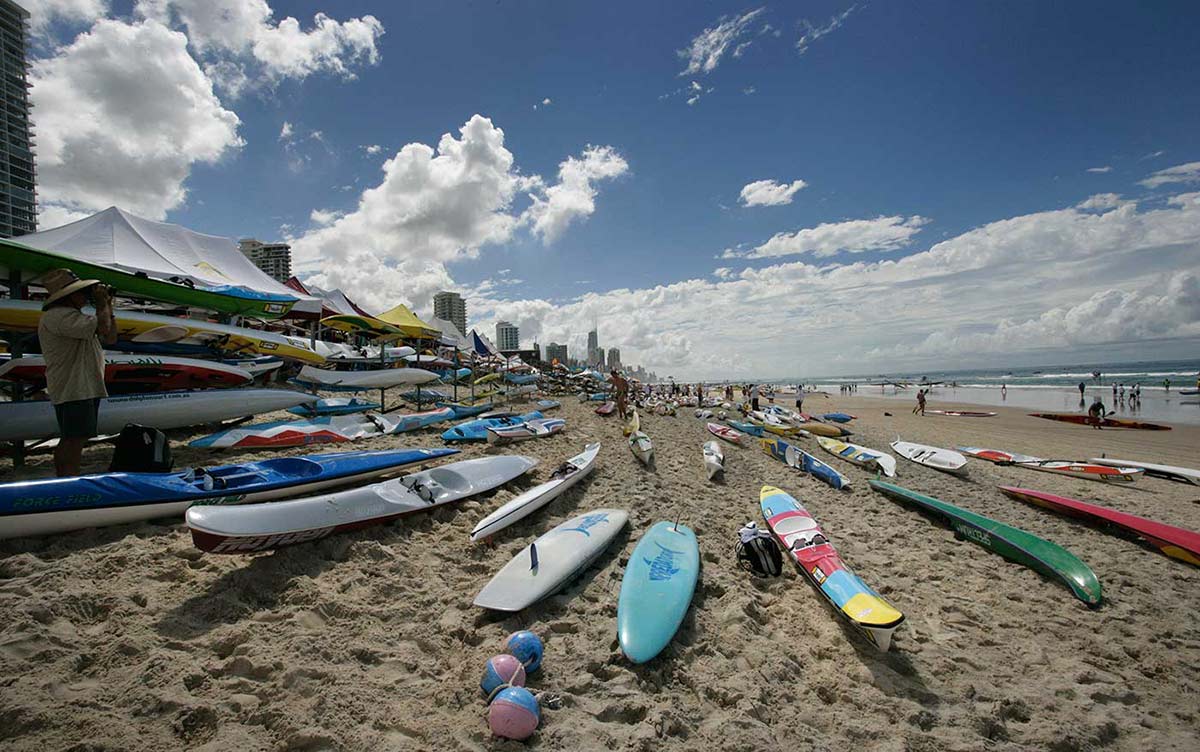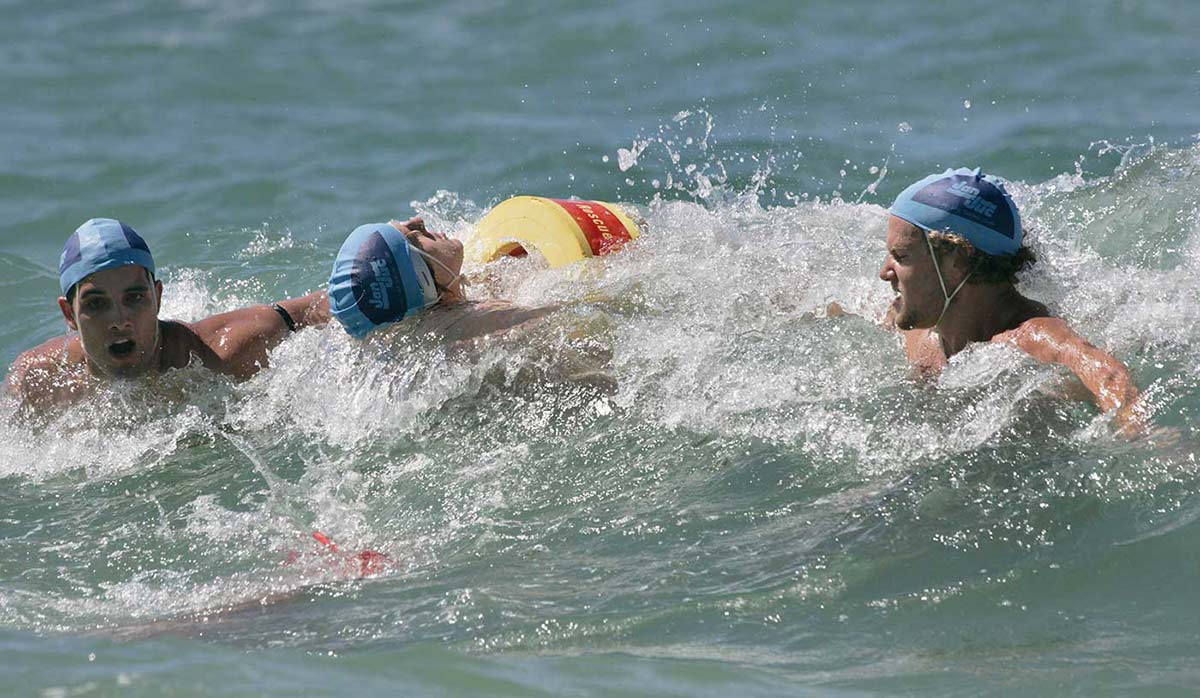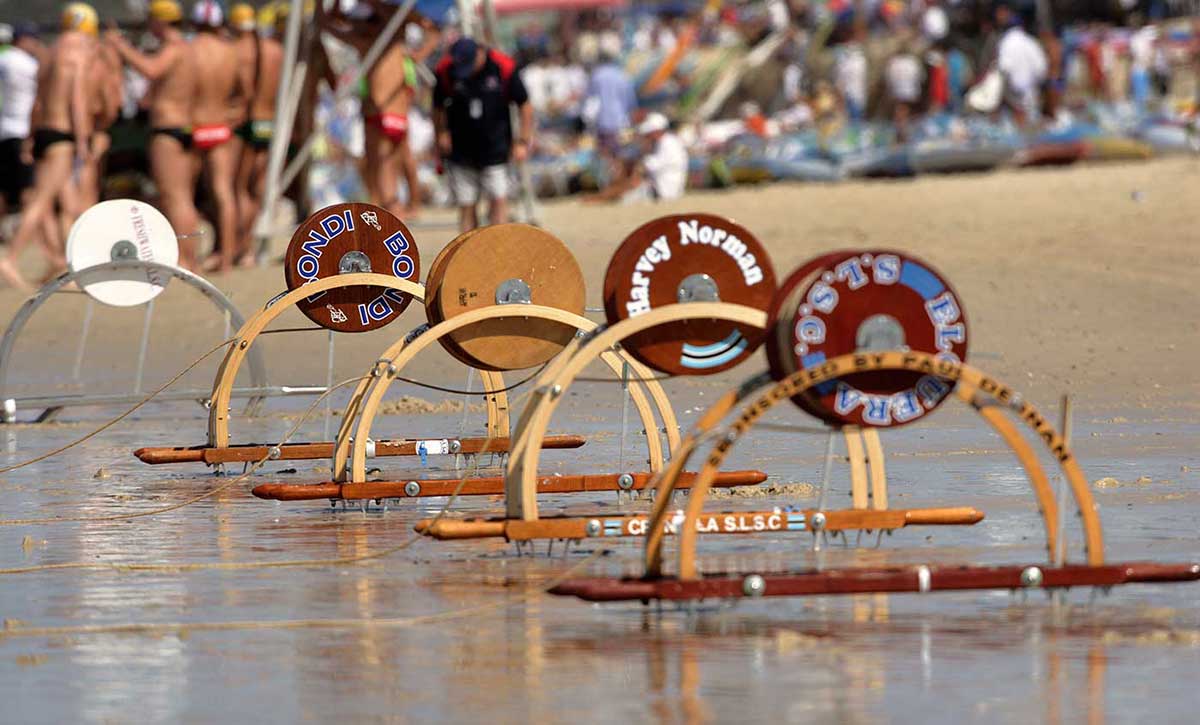A surf lifesaver needs knowledge and equipment in order to do the job. Over the past 100 years advances in medicine and technology have changed the way lives are saved. The buoy and box line were replaced by the surf-reel and line, which were replaced by the rescue board and tube. Surfboats have been overtaken by jet skis and inflatable rescue boats. Helicopters search for swimmers from the air.
Once a five-man crew was required to perform a rescue with the reel, line and belt. Now one surf lifesaver with a rescue board can do the job. While the way a surf lifesaver does the job has changed, it still requires watching and waiting – vigilance and service.
Sydney Morning Herald, 2 January 1906:
We cannot fence in our long stretches of ocean beaches, or even sections of them ... Life-lines with stable supports might be provided, and patrol-boats to ply off every bathing resort. They would popularise the beaches even more than at present, render the recreation of the bathers safer, and protect many valuable lives.
Invention and innovation
The Royal Life Saving Society was established in England in the late 19th century and developed rescue and resuscitation techniques. It trained lifesavers using military-like movements or drills that reinforced the steps but also presented an efficient image.
Surf lifesavers adopted some of Royal Life Saving’s equipment and techniques but they weren’t always appropriate for Australian surf conditions. Resourceful club members set about finding better ways to rescue swimmers in trouble and save more lives. They altered existing equipment, and they invented completely new ones. These inventions and innovations all had to pass the same test – they had to work in the surf.
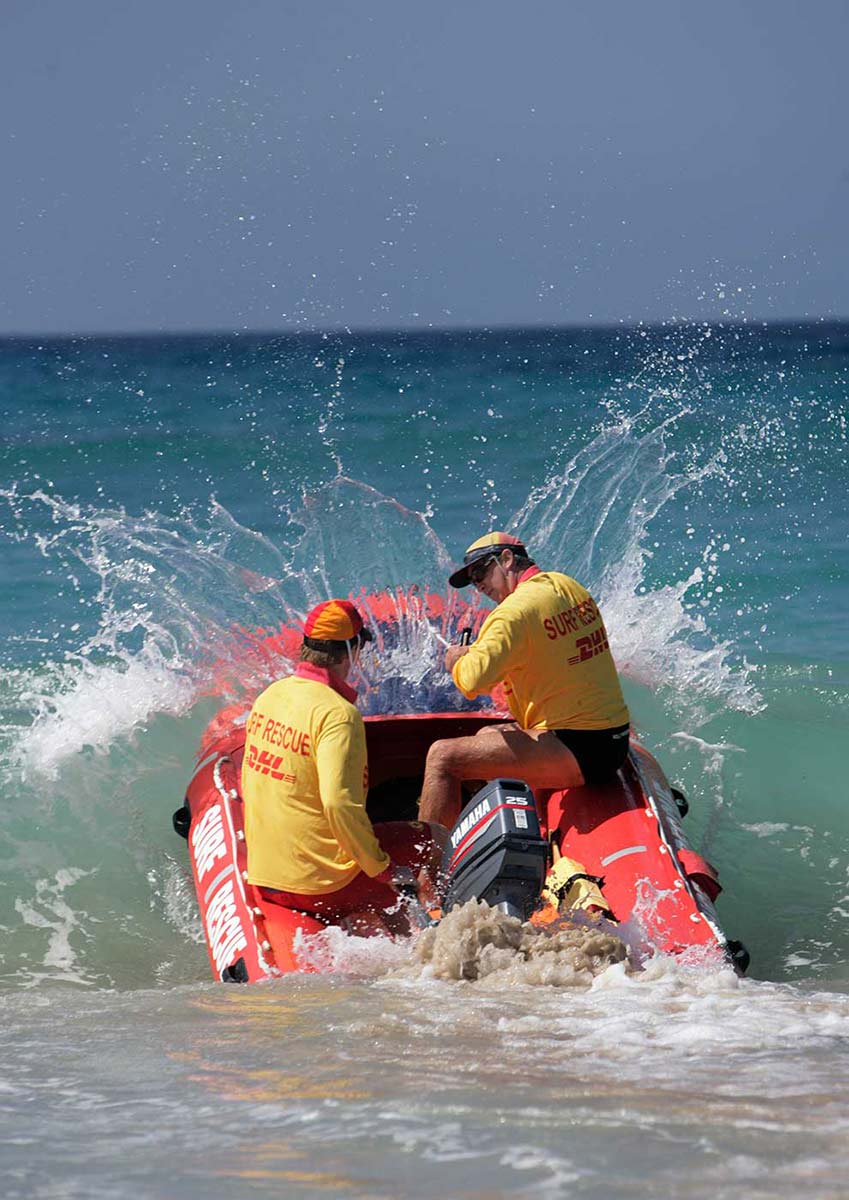
Changing ways
Inventive surf lifesavers adapted technology to better suit Australian surf conditions. In turn, that technology has changed the way surf lifesavers do their job.
Five men were once required to operate the reel, line and belt. Now, one person on a rescue board or a jet ski can be just as effective.
A surfboat crew of five has been replaced by two in an Inflatable Rescue Boat. A radio operator can alert ambulance and helicopter rescue services.
The old rescue techniques, no longer practical for patrol, are kept alive in competition.
The surf-reel
The surf-reel was one of the first pieces of equipment designed for surf lifesaving and replaced the lifebuoy and rope.
Lyster Ormsby and Warrant Officer John Bond made a model using a cotton reel and two hairpins. From this, a local coachbuilder built a full-sized surf reel. It was made of a cedar drum mounted on a wooden frame with a handle to pay out or wind in the rope. A brake was added soon after. Surf-reels were replaced by rescue tubes in the 1970s.
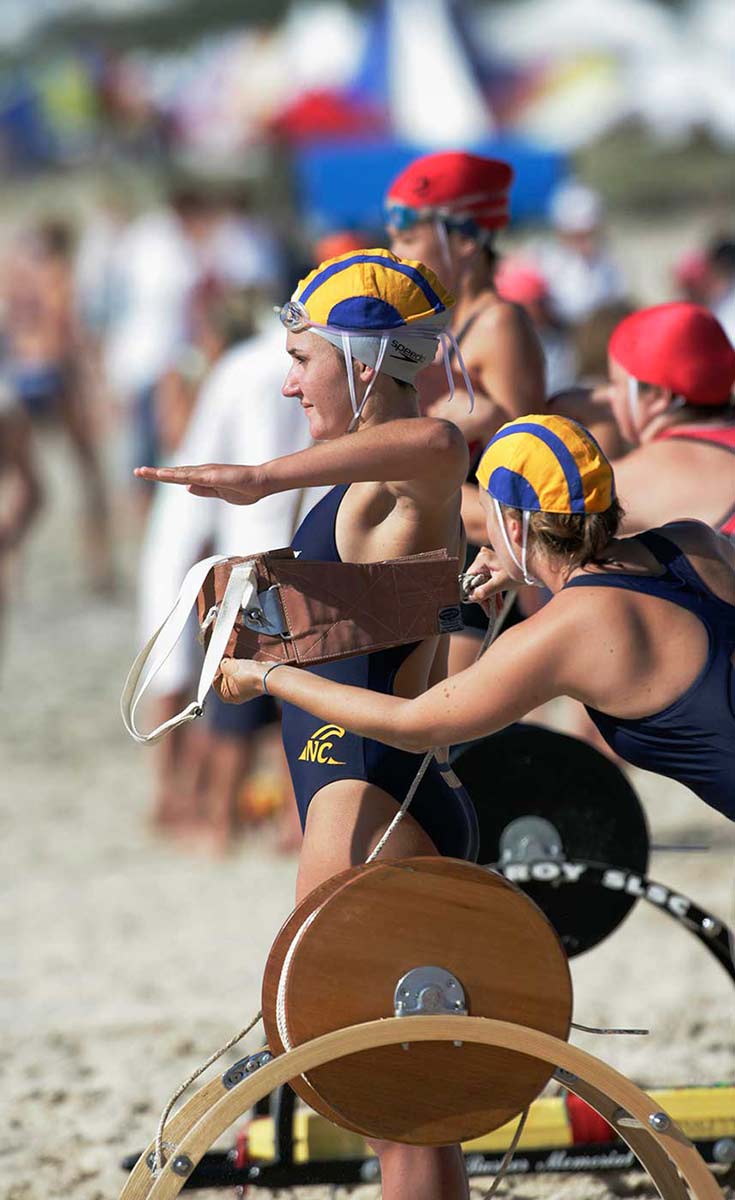
Waxing the line
Cotton or hemp lines become heavy in the water and would sometimes tangle, endangering the beltman. A waxed line is waterproof and does not tangle so easily.
This wax machine has an element to heat wax and two small wheels. The end of the line is threaded onto the wheels and pulled through the melted wax.
When synthetic line was introduced, waxing was no longer necessary, although a keen beltman will still wax the line before competition today.
The surf belt
Surf belts connect the line from the surf-reel to the lifesaver. The first belts were made of cork but swimming in them was difficult and there was no way of removing them in an emergency.
After a lifesaver drowned when his line became tangled, Steve Dowling designed a belt with a quick release pin. Yet the cork belt, now with fewer corks but with no easy release, was preferred.
Following two similar deaths in 1950, the Ross safety belt, a modified version of the Dowling belt, became standard.
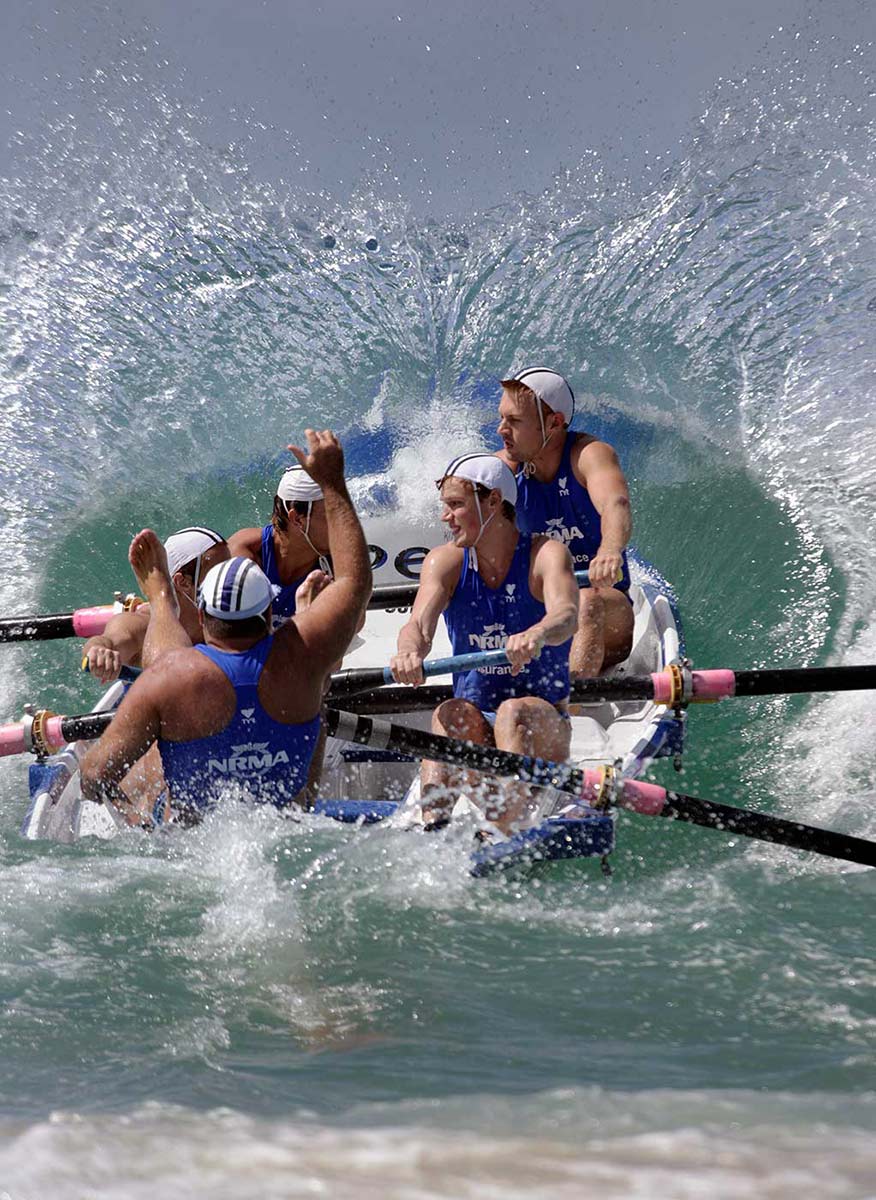
The surfboat
Walter Biddell of Bronte SLSC designed the first purpose-built surfboat. The Albatross was a double-ender crewed by three rowers and a sweep.
In 1913 Fred Notting of Manly improved the design, making it long enough for four rowers. Known as a banana boat because of its curved ends, it was equipped with a line and belt, knife, signalling flags and a shark spear.
The banana boat was replaced by tuck-stern boats in 1946. Since then, the only changes have been in materials, not design.
The Eve Rocker
The Eve Rocker was developed by Dr Frank Eve, a British doctor, and was designed to complement the Schafer method of resuscitation.
The patient was strapped to the stretcher and rocked. With the head down, the stomach pressed against the diaphragm, pushing air out of the lungs. When the patient was tipped up, air was drawn into the lungs. Unfortunately, water from the patient's stomach could also be drained into the lungs.
Patrolling from above
Helicopters enable surf lifesavers to rescue swimmers in heavy seas and transport injured swimmers to hospital for medical attention. They make rescues quicker and safer for all involved.
The surf lifesaving helicopter service began in Sydney in 1973. It expanded to the Gold and Sunshine coasts in Queensland and by the 1980s, was operating in Victoria, South Australia and Western Australia.
You may also like
